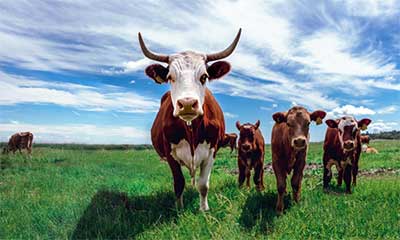Relevance: GS-3: Agricultural produce and issues and related constraints
Key phrases: twentieth livestock census, veterinary services, Mobile Veterinary Units (MVUs), artificial insemination, LH&DC scheme, mastitis, ‘One Health vision’
Context
- The twentieth livestock census indicated that India today has a livestock population of approximately 537 million; of this, 95.8% is concentrated in rural areas.
- Since most of the country’s livestock is in rural and remote areas, access to veterinary services is a major challenge.
- Studies show that livestock farmers are often compelled to travel far from their villages whenever their animals need treatment — a scenario that adversely impacts the longevity and the productivity of their livestock.
Recent Government Measures ‐Livestock Health and Disease Control (LH&DC) programme
- A major focus has been on the ‘Establishment and Strengthening of Veterinary Services – Mobile Veterinary Units (MVUs)’.
- The MVUs will build on the doorstep delivery model, as stationary hospitals cannot be easily accessed by most livestock farmers.
- The Government also provides doorstep services related to artificial insemination and vaccination for livestock.
What are Mobile Veterinary Units (MVUs) ?
- A typical MVU is a four-wheeler van, with working space for one veterinarian, one para-veterinarian and a driver-cum-attendant.
- It also has space for essentials such as equipment for diagnosis, treatment and minor surgery, other basic requirements for the treatment of animals, audio-visual aids for awareness creation and GPS tracking of vehicle.
- The LH&DC scheme envisages one MVU for one lakh animals; however, the number of vans in use could be higher in regions with difficult terrain.
- MVUs have been successfully running in several States (Andhra Pradesh, Gujarat, Madhya Pradesh, Odisha, Telangana, West Bengal, etc.)
Issues in veterinary services
- The Parliamentary Standing Committee of the Union Ministry of
Fisheries, Animal Husbandry and Dairying has observed
- Inadequate testing and treatment facilities for veterinary diseases pose a major challenge, especially now where there is a drastic rise in cases of zoonotic diseases.
- Most villages in the country lack testing facilities, and even when samples are collected, they need to be sent to blocks/districts nearby for test results.
- So, MVUs are needed to plug the gap in this regard.
- QUACKS issue:
- Untrained animal health workers have been popular in rural India as they charge less for consultations and are easily accessible.
- This has led to the inappropriate administration of antibiotics because of flawed prescriptions especially in cases of mastitis (inflammation of the udder in cattle).
- Problems pertaining to antimicrobial resistance are occurring and the animal no longer responds to a drug to which it was originally responsive.
- The World Health Organization (WHO) has listed antibiotic-resistant “priority pathogens” — a catalogue of 12 species/families of bacteria that pose the greatest threat to human health.
- The MVU model will mitigate the issue of antimicrobial resistance and is in alignment with the ‘One Health vision’ laid down by the Global Action Plan of WHO
- As approximately 70% of India’s milk supply is sourced from farmers who own less than five animals, losses due to mastitis alone amount to a milk loss of approximately 10 litres per day per farm (this translates into approximately ₹300-₹350 per day. So for most farmers, death of or disease in livestock could mean the difference between sustenance and starvation.
- The M.K. Jain Committee Report has highlighted
- Livestock farmers face greater challenges in comparison to traditional agricultural farmers especially while accessing credit and livestock insurance.
- Since a majority of livestock farmers have two to four animals per household, enhancing the longevity and the productivity of their livestock will go a long way towards alleviating rural poverty.
- Presently, there are an estimated 66,000 veterinary hospitals, polyclinics, dispensaries, aid centres across the country.
- The LH&DC scheme seeks to plug the challenges posed by the limitations of stationary hospitals by providing veterinary diagnostic and treatment facilities at a farmer’s doorstep for ailments, diseases or any other emergency veterinary conditions by MVUs.
Way Forward : Upgradation, Innovation and Outreach
- The main thrust for the near future will be on focused
- Upgradation of veterinary health-care services.
- Disease surveillance and training (CVE).
- Disease reporting in real time.
- Positive spillover Effects on Employment Generation: The increasing adoption of MVUs across the country will lead to a surge in employment opportunities for veterinarians and assistants.
- In the lockdown/s during the novel coronavirus pandemic, many start-ups provided video consultation sessions between livestock farmers and veterinarians, along with apps that provide detailed information to farmers on livestock health and nutrition.
- Thus, there is a great deal of scope for innovations and intervention by the private sector in the context of animal health and MVUs.
- Further, with the growing prevalence of the Public-Private Partnership (PPP) model, the MVU model is poised to generate higher returns on investment.
Mains Question
Q. Discuss how the Livestock sector can be the panacea for addressing the triple whammy of rural poverty, malnutrition and women empowerment associated with the Indian rural economy. ( 15 marks)
Source: The Hindu









